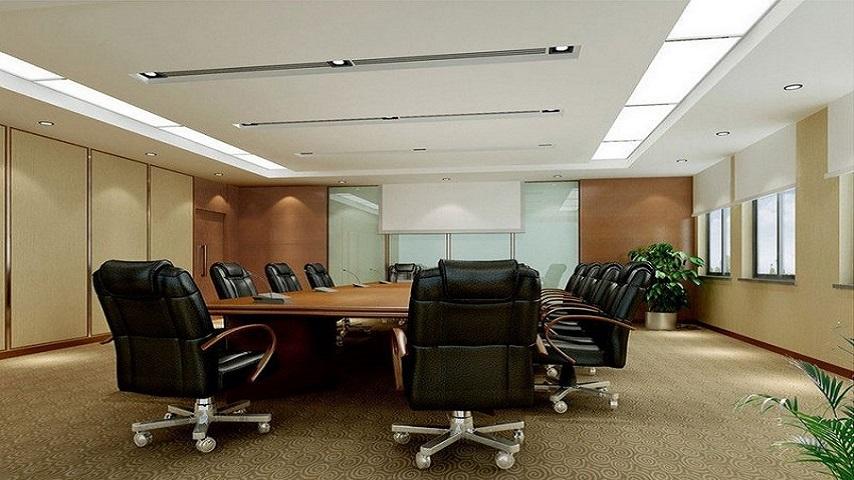The Psychology of Space: How Office Interior Design Affects Feelings and Focus

The spaces we inhabit influence our mood, behavior, and performance in ways we often underestimate. In a workplace setting, this connection between environment and human psychology becomes even more significant. Office interior design is no longer just about arranging desks and choosing paint colors—it’s about shaping an environment that positively impacts employees’ feelings and focus.
The psychology of space examines how design elements like layout, lighting, colors, and textures affect our mental and emotional state. When applied thoughtfully, these principles can turn an office into a catalyst for productivity, creativity, and overall well-being.
The Emotional Impact of Space
Humans are deeply responsive to their surroundings. A cramped, cluttered office can trigger stress and anxiety, while an open, organized, and aesthetically pleasing environment can promote calmness and motivation.
Some emotional responses linked to office design include:
- Calmness and Clarity: Minimalist spaces with clean lines and neutral tones reduce cognitive overload.
- Energy and Engagement: Vibrant colors, dynamic layouts, and interactive spaces can stimulate energy and creativity.
- Comfort and Security: Soft furnishings, warm lighting, and private nooks foster a sense of safety and belonging.
By considering the emotional triggers of design, companies can craft spaces that make employees feel valued and inspired.
Focus and Productivity Through Design
Focus is a limited resource, and the wrong environment can drain it quickly. Distractions—whether visual, auditory, or spatial—can break concentration and reduce work efficiency.
Key design factors influencing focus include:
- Layout: Open-plan offices encourage collaboration but can lead to noise distractions. The ideal approach blends open areas with quiet zones for deep work.
- Lighting: Natural light enhances alertness and reduces fatigue, while poor lighting can strain the eyes and lower concentration.
- Acoustics: Sound-absorbing materials, carpets, and acoustic panels can minimize unwanted noise, helping maintain focus.
- Ergonomics: Comfortable chairs, adjustable desks, and well-placed equipment prevent physical discomfort, which can otherwise steal attention from tasks.
When focus-enhancing elements are integrated into design, employees can work more effectively without battling their environment.
The Role of Colors and Materials
Colors have a psychological influence that can subtly shift mood and mental performance:
- Blue: Encourages focus, stability, and calmness.
- Green: Promotes balance, reduces stress, and supports creative thinking.
- Yellow: Boosts energy, optimism, and problem-solving.
- Neutral tones: Create a professional, grounded atmosphere.
Materials also matter—natural wood, stone, and plants introduce biophilic elements that connect people to nature, which has been shown to reduce stress and improve well-being.
Personalization and Employee Well-being
A crucial part of the psychology of space is allowing employees some control over their environment. Personalized desks, adjustable lighting, or even communal décor boards give individuals a sense of ownership. This autonomy not only boosts morale but also deepens engagement with the workplace.
Companies that prioritize well-being through design see measurable benefits—lower absenteeism, higher job satisfaction, and improved teamwork.
Design as a Strategic Business Tool
An office designed with psychological principles is more than an attractive workspace—it’s a strategic asset. The right environment supports mental clarity, reduces stress, and makes employees feel emotionally connected to their work. This, in turn, boosts productivity, retention, and innovation.
Conclusion
The psychology of space teaches us that office interior design is a silent but powerful force shaping how people feel and perform. Every choice—from desk placement to wall color—sends a message to employees’ subconscious minds, influencing their focus and emotions.
By intentionally designing spaces that balance aesthetics, functionality, and psychological comfort, businesses can create an environment where employees not only work but thrive. In today’s competitive landscape, a workplace that supports both feelings and focus is not just a design trend—it’s a business imperative.
One Stop Interior Design Solution: The Smartest Move for Corporate Offices
The Secret to Project Success? A Skilled Turnkey Interior Partner
- Art
- Causes
- Crafts
- Dance
- Drinks
- Film
- Fitness
- Food
- الألعاب
- Gardening
- Health
- الرئيسية
- Literature
- Music
- Networking
- أخرى
- Party
- Religion
- Shopping
- Sports
- Theater
- Wellness


